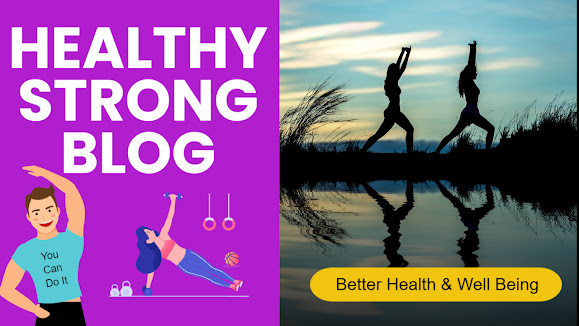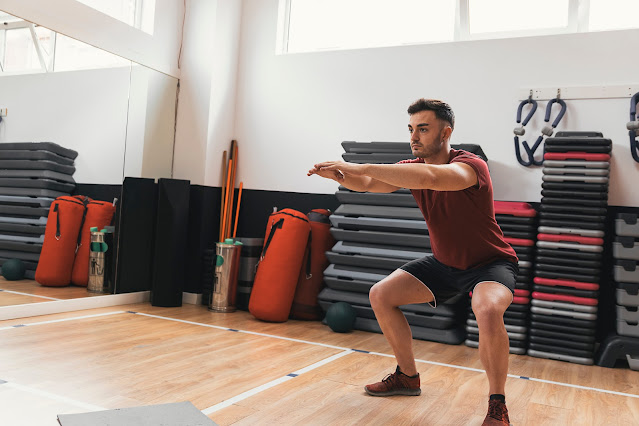Body Building vs Cross Training: Which is Better?
Body Building vs Cross Training: Which is Better?
Cross training and bodybuilding are two popular workout regimens that both aim to get the body in shape, but offer distinct advantages.
Cross training emphasizes speed, power and endurance
through heavy weights and plyometrics. This type of exercise can be an
excellent way to build muscle mass as well as develop strong bones.
Muscle Strength
Bodybuilding is the most common type of exercise, which
aims to build muscle. This involves lifting heavy weights, doing intense
cardio, and performing complex movements. Additionally, there are different
exercises designed specifically for certain muscle groups.
Crossfit is a popular strength training style that incorporates strength training and athletics. This type of workout typically involves competing against the clock to complete as many reps as possible within a certain amount of time.
Exercise offers a multitude of advantages that can benefit people of all ages and fitness levels. They improve body composition (the ratio between fat and muscle), lower your risk for disease, and build strength and endurance.
Strength training can be beneficial to athletes and
sports people by improving performance in their sport or giving them an edge in
competition. Furthermore, strength training has been known to boost self-esteem
and improve overall health.
Strengthened muscles can also help prevent back pain
and other ailments caused by weak muscles, such as osteoporosis. Furthermore,
strong muscles provide support to joints, bones, ligaments, and tendons which
makes injuries and falls less likely.
If you're new to strength training, it is essential that you find a program that motivates and helps you meet your objectives. Reach out to a physical therapist or a qualified Fitness Instructor for guidance in crafting an individualized strength-training regimen tailored specifically for you.
Strength training not only builds lean muscle mass, but it also increases your body's resting calorie burn throughout a day. Strength training may help combat bone loss, lower cancer risks and enhance cardiovascular health as well.
No matter if you choose to work out at a gym or from
home, make sure that two or three times each week you incorporate resistance or
strength-based training into your routine. These activities could include
squats, lunges and push-ups.
Beginners should begin with light weights and low
repetitions. As you gain strength, gradually add heavier loads and higher
repetitions. Be careful not to overexert yourself though - lifting too much
weight or doing too many reps too quickly can lead to injury. Furthermore,
resting between sets is crucial in order for your muscles time to recover and
refuel before beginning the next one.
Bone Density
Cross Training allows you to hone the strength of your
muscles and enhance performance. Plus, these longer, more intense workouts
challenge your body, encouraging it to develop a lean physique.
Your bones are constantly changing as you age, becoming
less dense and stronger but more vulnerable to breakage. Osteoporosis (where
bones become less dense and lose strength) and osteopenia (milder form of bone
loss) are both caused by decreased calcium levels that make bones porous, brittle,
and more likely to fracture.
The most accurate way to detect bone loss is with dual
energy X-ray absorptiometry (DXA), a specialized type of x-ray that provides
accurate measurements at four critical bone sites: the spine, hip, forearm and
wrist. DXA is a safe and painless test that does not expose you to much
radiation.
Your provider may order a DXA scan to detect bone
density issues and diagnose osteoporosis. It also helps them identify those at
risk for fracture, as well as monitor treatment progress.
Bone density tests can be performed in a hospital,
doctor's office or radiology center and are covered by Medicare if you are at
risk for osteoporosis and your doctor orders them.
If you have osteoporosis, it is recommended that you
undergo a bone density test as often as recommended by your healthcare provider
to monitor its progress and make sure the treatment is working effectively.
Your healthcare provider can advise on prevention methods such as taking
calcium and vitamin D supplements, doing weight bearing exercises to strengthen
muscles, and avoiding falls to keep your bones strong.
Another test you may need is a pulse-echo ultrasound,
which measures the thickness of your cortical bone at peripheral sites. These
devices are small and easily available at drugstores or mobile health vans in
your community.
Your doctor can use the results of your bone density
test to help decide whether you should begin, continue or switch medications
that will make your bones stronger and reduce the likelihood of breaking them.
They also have the opportunity to discuss with you both the advantages and
potential drawbacks of each medication as well as inquire about personal
preferences.
Cardiovascular Health
Cardiovascular disease refers to a group of diseases
that affect the heart and blood vessels, including coronary artery disease
(CAD), stroke, heart failure and arrhythmias. Many are hereditary conditions
but you can take control by making healthy lifestyle changes and taking
medications if needed. Cardiovascular disease affects an estimated 50 million
Americans today.
People at high risk for developing cardiovascular
disease should be evaluated by their healthcare provider. Your healthcare
provider will assess your condition and create a treatment plan to help manage it.
They may suggest medications, procedures or surgeries as necessary treatments.
Your healthcare provider will determine the appropriate
medication and treatments for you based on the type of heart or blood vessel
disease you have. Some of these drugs can help improve overall wellbeing, lower
cholesterol levels, reduce blood pressure and even prevent heart attacks and
strokes from happening.
There are medications that can stabilize your heart
rhythm and reduce blockages in arteries. Other therapies used for treating
certain forms of coronary artery disease and CVD may involve minimally invasive
or open-heart surgery, stents in heart or leg arteries, ablation of a damaged
artery or cardiac rehabilitation.
These treatments can be life-saving for those at high
risk for developing cardiovascular disease. Furthermore, they make it easier to
lead a long and healthy life with your condition.
Cardiovascular disease has several risk factors, such
as smoking, high blood pressure, high cholesterol, an unhealthy diet, lack of
exercise and obesity. You can reduce these by eating a nutritious diet, getting
regular physical activity and quitting smoking.
Though there are various types of heart and blood
vessel disease, coronary artery disease (CAD) is the most prevalent. This
occurs when plaque (made up of cholesterol) accumulates on the walls of
arteries supplying your heart with blood, narrowing them and decreasing or
stopping circulation to your heart. Signs and symptoms associated with CAD
include chest pain or discomfort, shortness of breath or a rapid heartbeat.
Mental Health
Cross training is an excellent way to keep your workouts interesting, as it requires you to switch up which exercise machines you use. Doing this prevents overuse injuries and setbacks in achieving your fitness objectives.One of the greatest advantages of cross training is its
capacity to enhance mental wellbeing. A suitable mix of exercises can boost
confidence and make you less anxious about tasks ahead, which is beneficial
when starting a new job or facing personal hardship.
Exercise can have a major effect on your self-esteem,
providing motivation to get up in the morning and begin working out again.
Plus, spending time at the gym allows for great connections with friends and
family which could help alleviate stress more effectively.
Cross training offers numerous advantages, and you
don't even need to commit to a gym membership to reap its benefits. In fact,
some of your cross training can even be done from home with help from fitness
apps or YouTube tutorials.
When it comes to cross-training, there are a few things to keep in mind. Begin with at least one session per week and no more than three to four per month so your body has time to recover from all the exertion of exercise.
My Un-Scientific Survey
My goal was to gather insights on a popular topic: Body
Building vs Cross Training. (I wanted to get 100 respondents but just couldn't get to that level in one day!) With their permission, I asked them 10
fitness-related questions, eager to understand their preferences, motivations,
and challenges.
The diverse responses I received painted a vivid
picture of the local fitness community's attitudes and experiences, revealing a
fascinating landscape of dedication and personal goals.
See the results below. How do you match up with these?
Survey Overview:
Total Respondents: 71
Survey Topic: Body Building vs Cross Training
1. Demographics:
Gender:
Male: 40 (56%)
Female: 28 (39%)
Non-binary: 3 (4%)
Age:
18-24: 15 (21%)
25-34: 25 (35%)
35-44: 18 (25%)
45-54: 8 (11%)
55+: 5 (7%)
2. Fitness Preferences:
Which do you prefer?
Body Building: 30 (42%)
Cross Training: 41 (58%)
3. Motivations:
Primary motivation for
your fitness routine:
Building muscle: 24 (34%)
Improving overall fitness:
28 (39%)
Weight loss: 10 (14%)
Health benefits: 7 (10%)
Social interaction: 2 (3%)
4. Training Frequency:
How often do you train per week?
1-2 times: 10 (14%)
3-4 times: 33 (46%)
5-6 times: 23 (32%)
Every day: 5 (7%)
5. Perceived Benefits:
Top perceived benefits of Body Building:
Increased muscle mass: 40
(56%)
Improved strength: 18
(25%)
Enhanced physical
appearance: 8 (11%)
Boosted confidence: 5 (7%)
Top perceived benefits of
Cross Training:
Improved overall fitness:
35 (49%)
Increased endurance: 21
(30%)
Better flexibility: 10
(14%)
Weight management: 5 (7%)
6. Challenges:
Biggest challenge in Body Building:
Time commitment: 28 (39%)
Risk of injury: 18 (25%)
Cost of
supplements/equipment: 15 (21%)
Boredom/repetitiveness: 10
(14%)
Biggest challenge in Cross
Training:
Learning new exercises: 20
(28%)
Risk of injury: 18 (25%)
Time commitment: 17 (24%)
Cost of classes/equipment:
16 (23%)
7. Influences:
What influenced your choice the most?
Personal goals: 30 (42%)
Recommendations from
friends/family: 15 (21%)
Online resources/social
media: 15 (21%)
Professional advice
(trainers, coaches): 11 (15%)
8. Satisfaction:
How satisfied are you with your current fitness
routine?
Very satisfied: 25 (35%)
Satisfied: 30 (42%)
Neutral: 10 (14%)
Dissatisfied: 4 (6%)
Very dissatisfied: 2 (3%)
9. Future Plans:
Do you plan to continue with your current routine?
Yes: 55 (77%)
No: 8 (11%)
Undecided: 8 (11%)
10. Additional Comments:
Common themes:
Desire for variety in workouts.
Interest in combining both Body Building and Cross
Training.
Emphasis on the importance of professional guidance to
avoid injury.













Comments
Post a Comment